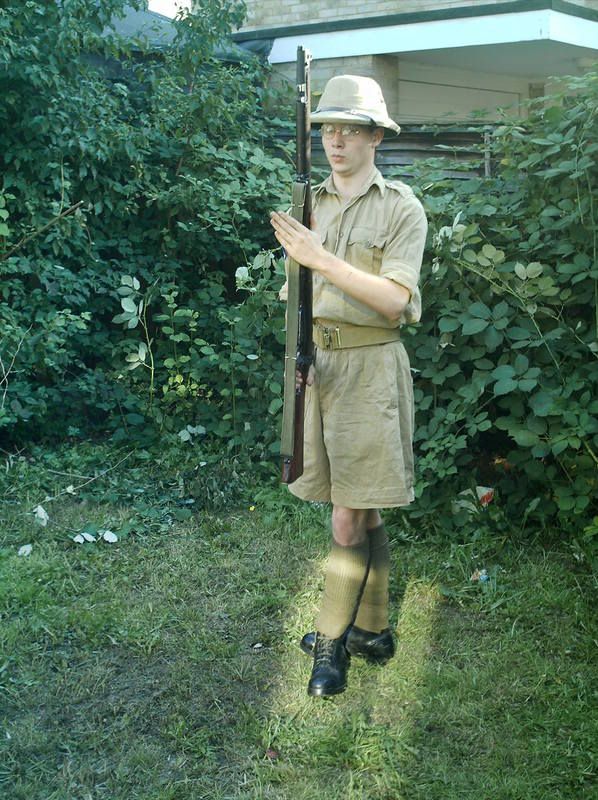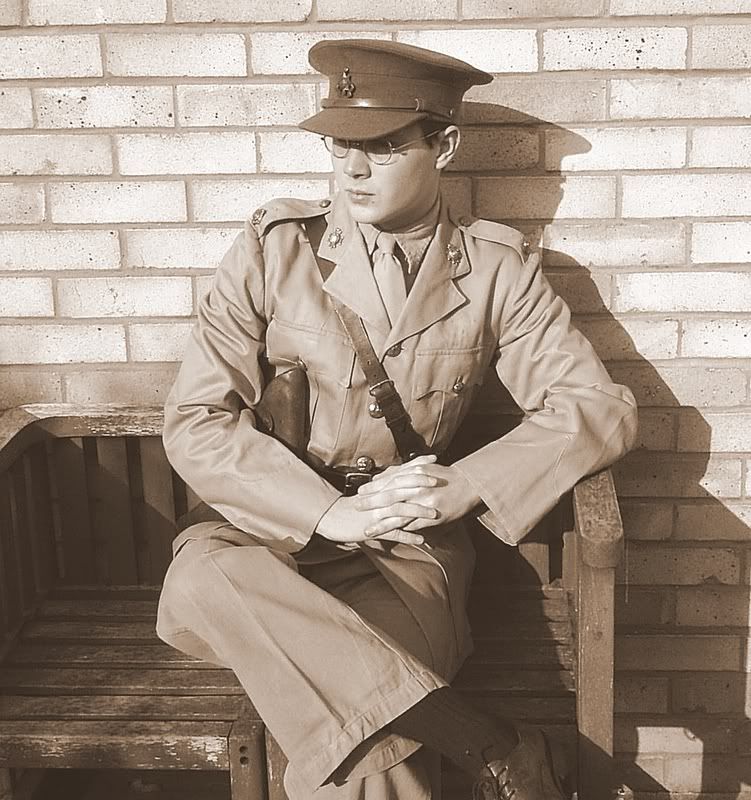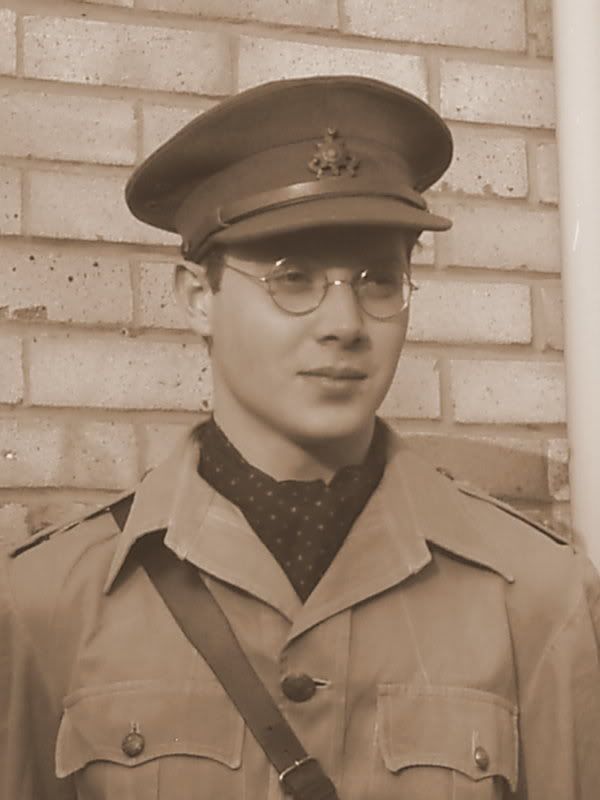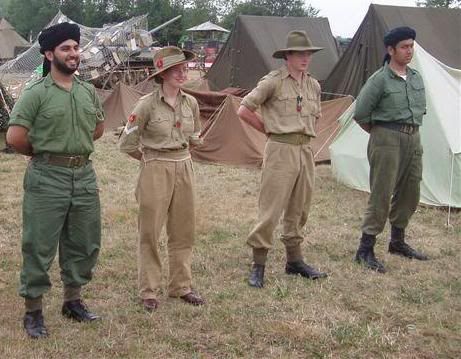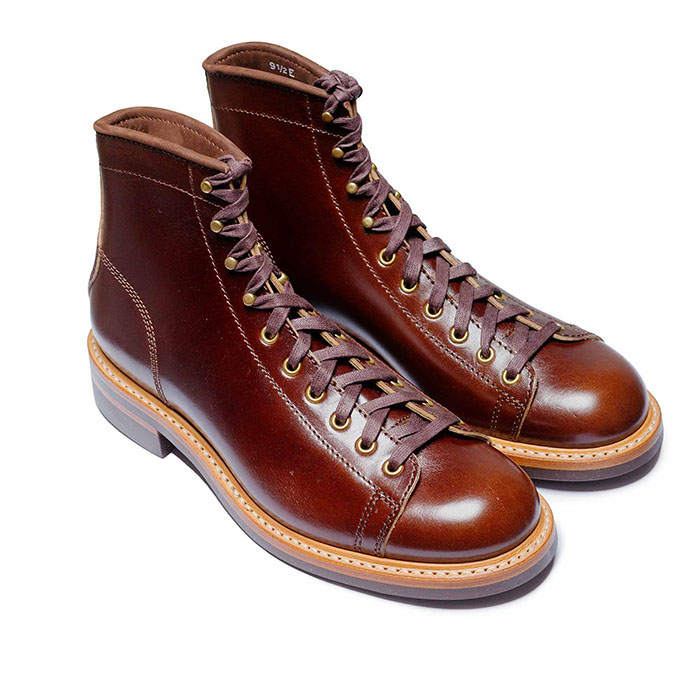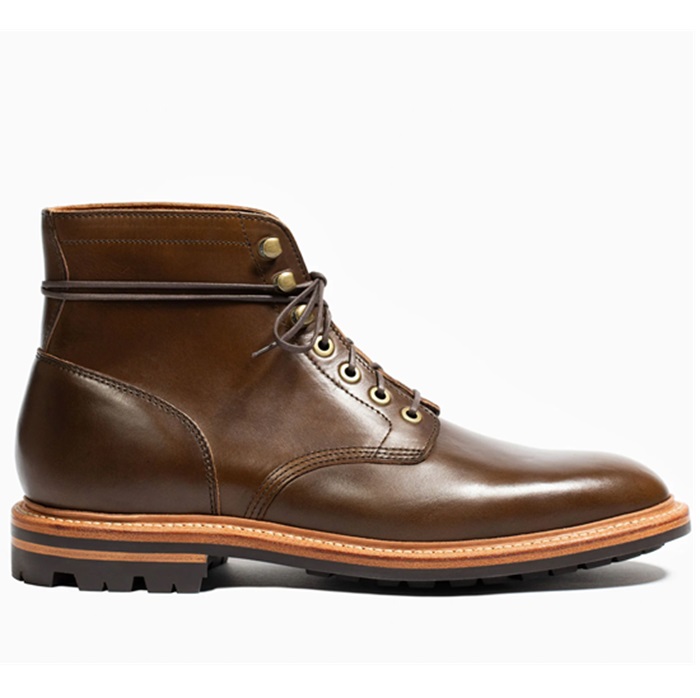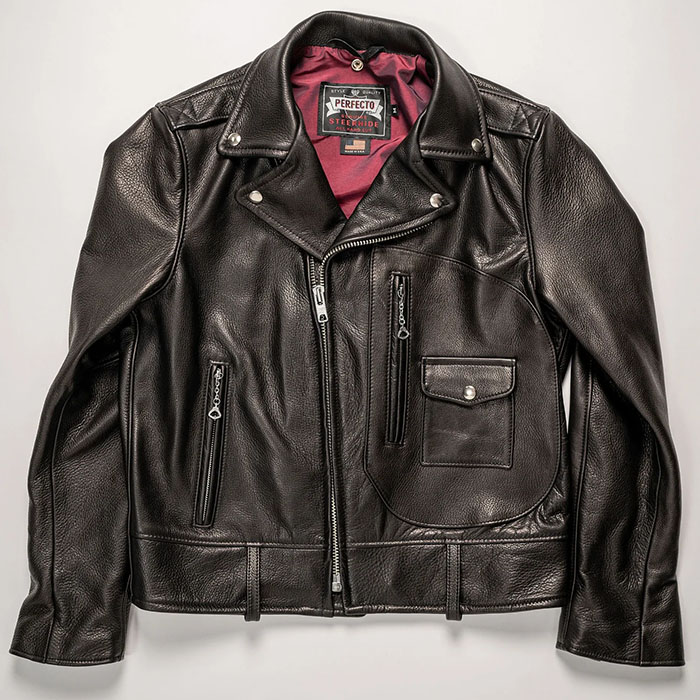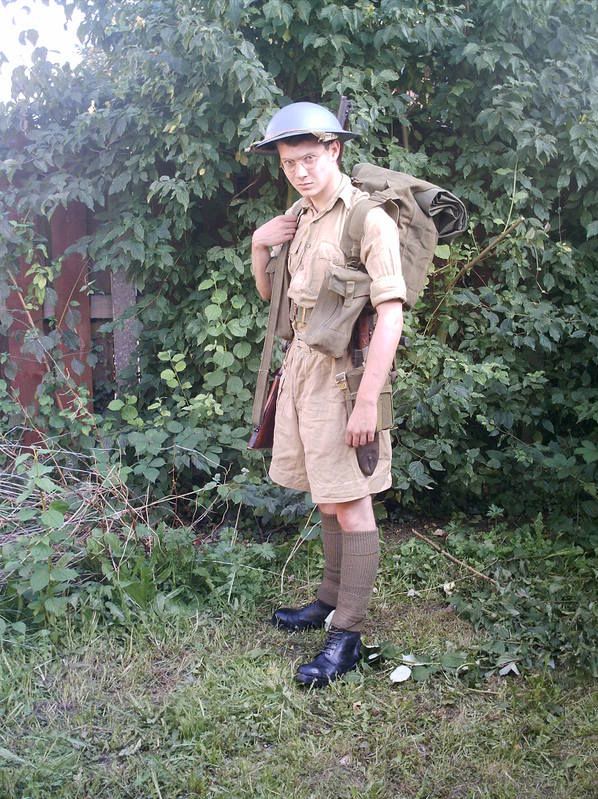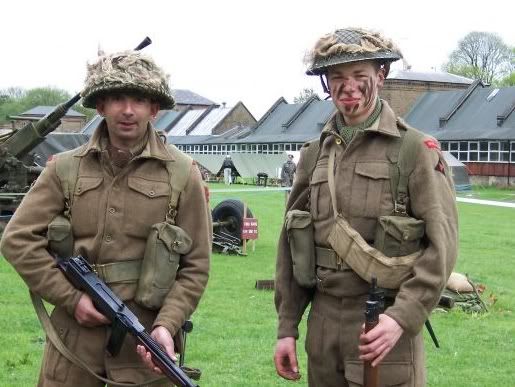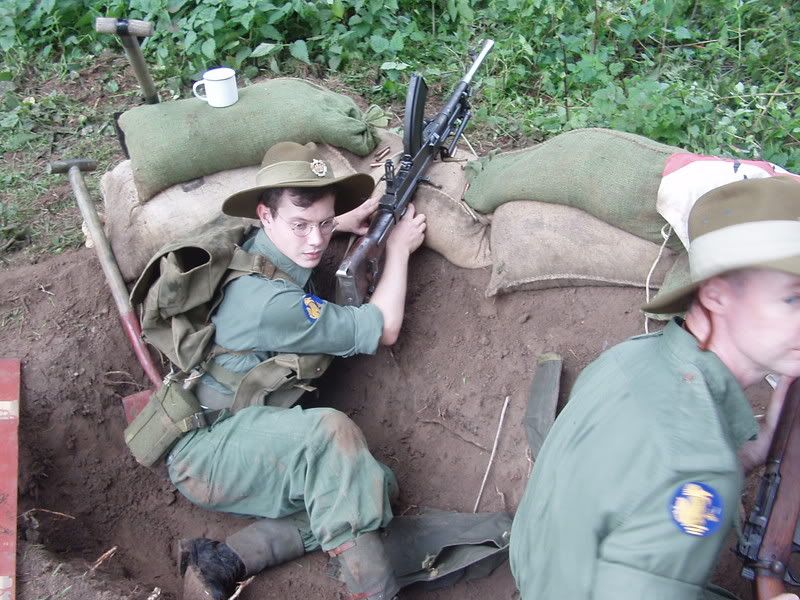Cobden
Practically Family
- Messages
- 788
- Location
- Oxford, UK
I've got nothing better to do, so I thought I'd do a few quick guides on British Uniforms of WWII, as a general guide to those who wish to portray those sadists who have gotten bored of women saying "you look handsome" when they see you in an American uniform and instead want to hear "you smell funny"! There'll be quite a few of these, covering all three services.
British Army 1939-1940 - temperate combat uniforms
At this stage of the war, there were two uniforms that were worn by British soldiers: the very recognisable and well known 1937 pattern battledress (BD)uniform, and the largely obsolete 1922 pattern service dress (SD), the former supposedly replacing the latter, however many units had not been re-equiped at the early stages of the war, and thus went to war wearing this rather old fashioned uniform.
Equipment carried at this stage was either 1937 pattern webbing (with MkI bren pouches, and blancoed a colour known as "Pea Green"), or 1908 pattern webbing (similarly obsolete in the British army as the 1922 pattern webbing, and blancoed either Pea Green or "Buff", another shade of green), both in what was called "battle order", with a small pack/haversack replacing the large pack/rucksack. The primary weapon carried by the average infantryman was Short Magazine Lee-Enfield Number 1. Mk. III or MkIII* with the 1907 sword bayonet . During this period it is not uncommon to see pretty much any combination of webbings and uniforms, with some BD wearing units still equipped with '08 webbing, some with '37 webbing, some SD wearing soldiers with '37 pattern webbing, etc. Worn at the front, and easily accessible would be a MkVI Gas mask bag (AKA the Indiana Jones Bag), and at the back, either over or under the pack, would be carried a gas cape.
In combat the primary headgear would have been the MkII helmet covered with a hessian (burlap) cover, whereas at base the Field Service Cap (side cap, chipbag, and other names to rude to print), and certain unit specific headgear such as the Glengary would be worn.
Footwear would be the toecapped amunition boot, and underneath the tunic a khaki wool shirt with a white neckband, or a WWI style "greyback". Insignia would consist of rank insignia on the sleeve, and perhaps cloth slide on regimental titles on the eppaulletes (although these were supposed to be removed), as well as cap badges on caps
1937 Battledress, 1937 Pattern Webbing. The webbing is the wrong colour, but it gives you the idea

1922 Pattern Service Dress;

Walking out variations
At this stage, walking out uniform would consist of the BD or SD worn with or without a webbing belt, a field service cap, regimental caps, or "coloured" field service caps (which were in regimental colours). Brass regimental collar badges and shoulder titles were worn on SD, and sometimes on BD.
A selection of Coloured FS caps

Officers variations
In much the same way both BD and SD was worn by soldiers, the same goes for the officers. SD was usually worn with a Sam Browne and Puttees, BD would have 37 Pattern webbing (pistol order) and was worn with an open collar (often with serge faced lapels), with a shirt and tie underneath. Boots were usually brown as opposed to black, and headgear would often consist of the SD cap. For walking out, officers Service dress would be worn with brown shoes.
Officers Service Dress, left (me) shewing walking out. Centre shewing battle order
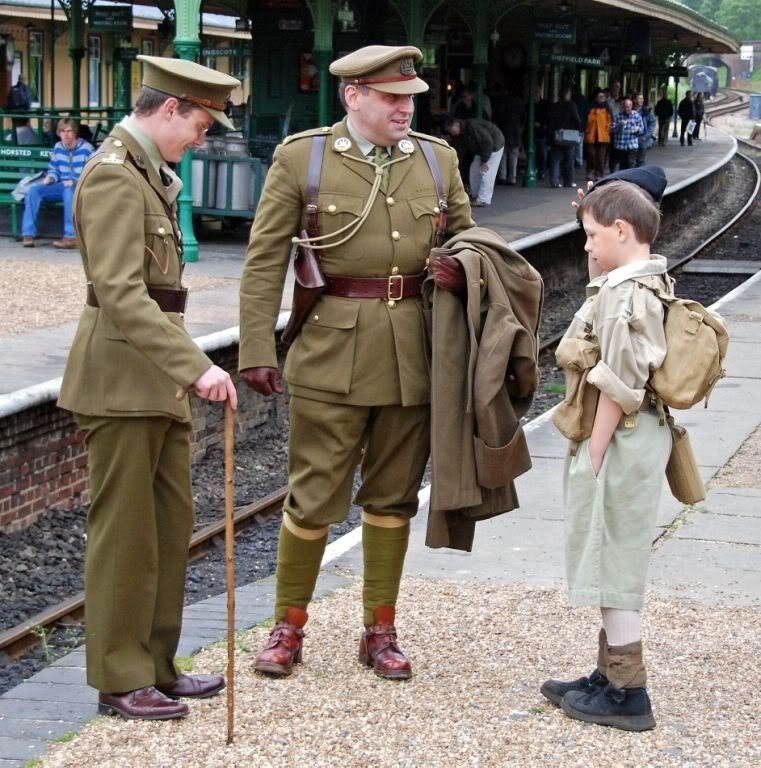
Other Variations
There were of course other variations, the most notable being cavalry regiments, who wore spurs and britches and leather equipment on parade in service dress, and rifle regiments, who had black plastic buttons as opposed to brown, and officers wore black boots and black Sam Brownes in Service Dress. Drivers, cavalrymen, tankers,corpsmen, gunners, and others had variations in the webbing throughout the war
(more to come)
British Army 1939-1940 - temperate combat uniforms
At this stage of the war, there were two uniforms that were worn by British soldiers: the very recognisable and well known 1937 pattern battledress (BD)uniform, and the largely obsolete 1922 pattern service dress (SD), the former supposedly replacing the latter, however many units had not been re-equiped at the early stages of the war, and thus went to war wearing this rather old fashioned uniform.
Equipment carried at this stage was either 1937 pattern webbing (with MkI bren pouches, and blancoed a colour known as "Pea Green"), or 1908 pattern webbing (similarly obsolete in the British army as the 1922 pattern webbing, and blancoed either Pea Green or "Buff", another shade of green), both in what was called "battle order", with a small pack/haversack replacing the large pack/rucksack. The primary weapon carried by the average infantryman was Short Magazine Lee-Enfield Number 1. Mk. III or MkIII* with the 1907 sword bayonet . During this period it is not uncommon to see pretty much any combination of webbings and uniforms, with some BD wearing units still equipped with '08 webbing, some with '37 webbing, some SD wearing soldiers with '37 pattern webbing, etc. Worn at the front, and easily accessible would be a MkVI Gas mask bag (AKA the Indiana Jones Bag), and at the back, either over or under the pack, would be carried a gas cape.
In combat the primary headgear would have been the MkII helmet covered with a hessian (burlap) cover, whereas at base the Field Service Cap (side cap, chipbag, and other names to rude to print), and certain unit specific headgear such as the Glengary would be worn.
Footwear would be the toecapped amunition boot, and underneath the tunic a khaki wool shirt with a white neckband, or a WWI style "greyback". Insignia would consist of rank insignia on the sleeve, and perhaps cloth slide on regimental titles on the eppaulletes (although these were supposed to be removed), as well as cap badges on caps
1937 Battledress, 1937 Pattern Webbing. The webbing is the wrong colour, but it gives you the idea

1922 Pattern Service Dress;

Walking out variations
At this stage, walking out uniform would consist of the BD or SD worn with or without a webbing belt, a field service cap, regimental caps, or "coloured" field service caps (which were in regimental colours). Brass regimental collar badges and shoulder titles were worn on SD, and sometimes on BD.
A selection of Coloured FS caps

Officers variations
In much the same way both BD and SD was worn by soldiers, the same goes for the officers. SD was usually worn with a Sam Browne and Puttees, BD would have 37 Pattern webbing (pistol order) and was worn with an open collar (often with serge faced lapels), with a shirt and tie underneath. Boots were usually brown as opposed to black, and headgear would often consist of the SD cap. For walking out, officers Service dress would be worn with brown shoes.
Officers Service Dress, left (me) shewing walking out. Centre shewing battle order

Other Variations
There were of course other variations, the most notable being cavalry regiments, who wore spurs and britches and leather equipment on parade in service dress, and rifle regiments, who had black plastic buttons as opposed to brown, and officers wore black boots and black Sam Brownes in Service Dress. Drivers, cavalrymen, tankers,corpsmen, gunners, and others had variations in the webbing throughout the war
(more to come)

